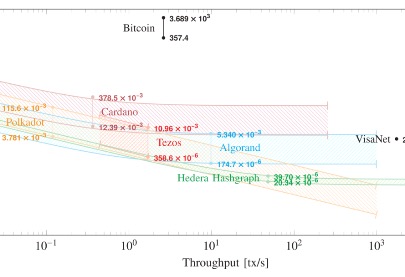COP27 - DLT Environmental Impacts
November 15, 2022
By James Wall
How green is my blockchain?
As COP27 draws to a close we are left with the underwhelming feeling that despite the focus of the leaders around the table not enough is being done to change the course of climate change. But we did not want to leave the week on a dull note so thought it would be good to look at a few of the key themes from the discussions and the initiatives we are hopeful about.
Tokenized Carbon
Of interest to the Atom team was the growing interest in the role carbon credits play in incentivising project development. The Carbon Credit market has been going through some volatility in both the Regulated and Voluntary markets as standards and certification practices are being developed. The role that entities such as Verra and Gold Standard play in this can not be underestimated, as the need to bring serious levels of institutional money to investments requires the transparency and auditability that these standards support.
It was thus positive to hear that Gold Standard is running a public consultation process on the use of the Gold Standard for digital Carbon Credits. We see this as an important step to provide the standards and build the protocols for tradable carbon tokens, marrying the transparency and auditability properties of Blockchain with the standards and strong protocols of Gold Standard
How Green is my Blockchain
The potential for a tokenized carbon market led us to question - “How green are the operating blockchains (L1)? Putting aside all of the Proof of Work (PoW) chains out there given the known environmental impact of mining associated with the consensus model, we looked for research on the current Proof of Stake (PoS) offerings.
The most up to date paper we could find was the updated DLT Environmental Impact Report from the University College London’s, Centre of Blockchain Technology. This paper examines the energy consumption of PoS networks looking at throughput. The research developed a model to compare different configurations of Proof-of-Stake consensus mechanisms in various DLTs such as Ethereum 2.0, Algorand, Cardano, Hedera, Polkadot and Tezos. Interestingly the greenest of the DLT’s examined was Hedera Hashgraph. The graph on the left illustrates the results of the study.
Herdera is interesting in that it is not actually a blockchain DLT but is a distributed ledger and consensus protocol that works as a Hashgraph as opposed to a Blockchain.
| Hashgraph | Blockchain |
| Like blockchain, Hashgraph is a data structure that maintains a shared record of events/transactions between members. Unlike blockchain the records of who told who what and in what order they did so is shared as a collaborative history as participants add and share information. This protocol allows much faster validation than a blockchain. | Blockchain works as a sequence where each transaction adds to the previous transaction information on the new transaction information and encrypts it. A third party is needed to validate the transactions between parties. Building a single chain with each “block” built upon the top of the previous block, forming the chain |
Here is Herera's explanation of how it works
Climate Smart Agriculture
The history of agricultural productivity has mainly been focused on driving up yields. The long established practices involved aggressive tilling and use of fertilizers, herbicides and pesticides. Over the past 20 years the momentum around biofarming and zero till practices to preserve soil integrity and the carbon sequestering properties of plant root systems have demonstrated that it boosts productivity, enhances resilience and reduces greenhouse gas emissions
The World Bank initiative around Climate Smart Country Profiles is helping countries around the globe to identify and adopt farming practices that can boost local productivity and are aligned to the changing climate and long term sustainability of the local environment.
